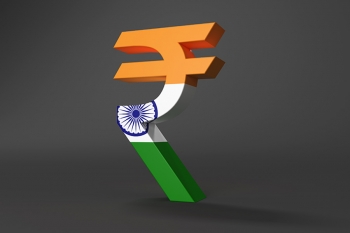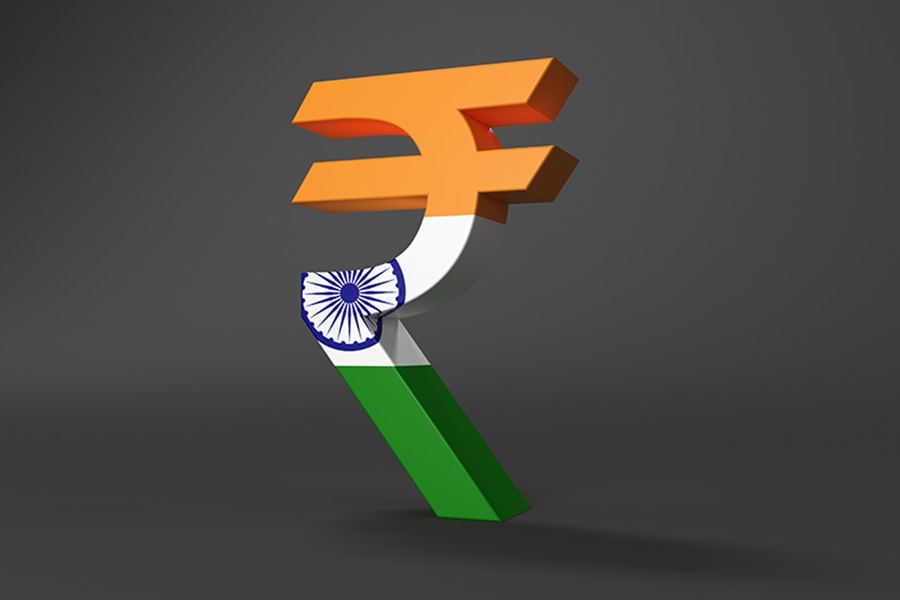
.png) Dr Prakash Louis
Dr Prakash Louis

Presenting the digital Union Budget, Union Minister of Finance and Corporate Affairs Nirmala Sitharaman stated that India’s fight against COVID-19 continues into 2021 and that this moment in history, when the political, economic, and strategic relations in the post-COVID world are changing, is the dawn of a new era – one in which India is well-poised to truly be the land of promise and hope.
The budget 2021-22 projected 6 pillars. They are: 1. Health and Wellbeing, 2. Physical & Financial Capital, and Infrastructure, 3. Inclusive Development for Aspirational India, 4. Reinvigorating Human Capital, 5. Innovation and Research cum Development, 6. Minimum Government and Maximum Governance.
The Finance Minister announced the creation of a new centrally-sponsored scheme, the ‘PM Atmanirbhar Swasth Bharat Yojana’, which will have an outlay of Rs. 64,180 crore over the next six years and will be dedicated to developing capacities of “primary, secondary and tertiary care health systems”. Ms. Sitharaman also announced Rs 20,000 crore to capitalise the newly announced Development Financial Institution and said the ambition would be for a lending portfolio of “at least Rs 5 lakh crore” in the next 3 years.
The Finance Minister also stated, “The government, stretched its resources to deliver for most vulnerable sections of our society – the poorest of the poor, the Dalits, Tribals, the elderly, the migrant workers, and our children …” She also announced the setting up of 750 Eklavya model residential schools in tribal areas. The unit cost of each such school was increased from Rs 200 million to Rs 380 million, and to Rs 480 million for hilly and difficult areas. This, she said, “would help in creating robust infrastructure facilities for our tribal students”. Ms. Sitharaman announced the revamping of the Post Matric Scholarship Scheme for the welfare of Scheduled Castes (Dalits) and allotted Rs 352.19 billion for six years till 2025-2026, to benefit 40 million students.
Interestingly, by the time the Finance Minister concluded her speech, the Bombay Stock Exchange index rose by 5%. But then the index has risen 87% since the day the horrific lockdown was announced. The revenues and profits of the largest companies have been growing, and yet their expenditure on workers is declining. This in reality is the horror story of this year’s budget. Lies, falsehood, deception and deceit have been the mode of governance by the present government. Budget 2021-22 is the epitome of it.
Budget a Betrayal of the Poor, Dalits and Tribals
As the days passed by after the budget presentation, conscious citizens realised the criminal omission and commission of the present regime. On the whole, India’s rural sector was not addressed by the Budget 2021. The agriculture ministry’s budget is not substantially higher, nor has there been any announcement regarding an expansion in the PM Kisan programme. It is deplorable to see that this government which speaks “Sab ke sath aur sab ka vishvas” has totally deceived the common citizens of the country. Food, Rural Development and Health are the most crucial sectors for the poor, Dalits and Tribals. But the allotment in these sectors have been reduced.
Table 1: Reduction in 3 Crucial Sectors in the Budget
|
S. No. |
Sector | 2020-2021 [Cr] | 2021-2022 [Cr] |
% |
|
1 |
Food | 4,22,618 | 2,42,836 |
42.5 |
|
2 |
Rural Development | 2,16,342 | 1,94,633 |
10.0 |
|
3 |
Health | 82,445 | 74,602 |
10.0 |
Source: Bajpai. NDTV. 1/2/21
Though, health and vaccination are projected as primary concern of the government, in reality this is not the case. Prime Minister Narendra Modi and Health Minister Harsh Vardhan had said that the government will bear the cost of vaccinating health and frontline workers using money from the PM CARES FUND. However, they haven’t said anything about whether the government will also assume the cost of vaccinations in the second phase, of 27 crore senior citizens and all the citizens or if state governments will have to chip in.
Realising this lack of political will, some states like Kerala, Bihar, Madhya Pradesh and Tamil Nadu, have announced free vaccination programmes. This is a laudable pronouncement since the finances of all states have been badly hit by the pandemic, with the country’s GDP recording a historic contraction of 23.9%. Without additional resources, the vaccination drive will strain the already under-resourced public health system enormously.
The Wire Staff, writing on the budget on 1st February, bemoaned the fact that in an alarming display of negligence, the Union government has sharply slashed the budgetary allocation for education by Rs 6,088 crore. This in a sense is not news since education has been a prominent low-priority area for the Modi government. This is underlined by the evidence that it wasn’t able to fully spend the allocation specified in the 2020-2021 budget. While it had set aside Rs 99,312 crore for the education ministry, it could spend only Rs 85,089 crore, in a year that saw thousands of students struggling to attend online classes and had restricted access to formal education.
The intent of the government to disinvest education sector too is clear from the fact that this year’s budget has made provisions to opt for privatise school education. Sitharaman announced that the government would include a hundred government-run Sainik schools to be managed under the public-private partnership programme, and open around 750 Eklavya schools across India. Experts have been pointing out that spending on Eklavya schools, which are single-teacher schools, instead of full-fledged facilities for children should only be a stop-gap arrangement in between the government’s efforts to build permanent education infrastructure.
CPM leader Brinda Karat speaking to NDTV after budget presentation reiterated that the Economic Survey proves farmers' concerns are right. She argued that there is an outright defence of the three farm laws. The emphasis in the Survey is on how to cut down on food subsidies. It underlines the various reports of the government on farm reforms to make the point that the current policies of guaranteed MSP, open-ended procurement leading to surplus stocks, supplying the PDS foodgrains at low, fixed prices is untenable. The proposal in the Economic Survey is to raise the Central Issue Prices of foodgrains under the Food Security Act.
Gautam Modi, writing in The Leaflet on 4th February, called the Budget as Crude ex
Subodh Varma, writing in the Newsclick last year after the budget, undertook a scathing attack on Modi government on its political will not to allot sufficient budget, not spending even the limited allotment and misusing and misinforming the nation regarding his government’s concerns for the Dalits and Tribals. Varma pointed out that in the past 5 years, Dalit communities have been deprived of a staggering Rs 2,72,000 crore while Adivasi communities have suffered a loss of Rs.1,14,000 crore due to drastic under-allocation in successive Budgets. This emerges from an analysis of Budgetary allocations done by National Campaign on Dalit Human Rights (NCDHR) and Dalit Arthik Adhikar Andolon (DAAA).
Here is how the losses are calculated: India has about 201 million Dalits and 104 million Adivasis, as per Census 2011. That’s about 16% and 8% of the total population, respectively. It was standard government policy to allocate same proportion of funds from the Plan component of the Central Budget to programmes and schemes for Dalits and Adivasis. Since the Modi government abolished Plan and Non-Plan differentiation in 2017-18, there was chaos, and for two years, such specific allocations were done by annual guidelines. Finally, based on a Finance Ministry circular of 2016, a system was put in place under which total allocation for all Central schemes and Centrally sponsored schemes was shared as per population proportions.
However, this tragic tale does not end here. A chunk of even the limited allocated amount is spent on general schemes and programmes, although it is shown in the books as spent on these communities. For instance, in this year’s Budget it was revealed that Rs 756 crore was spent on “Compensation to Service Providers for creation and augmentation of telecom infrastructure Bharatnet”, except that this amount was shown under the specific allocation for Dalit/Adivasis!
NCDHR-DAAA has calculated that out of the Rs.3,12,000 crore allocated for Dalits in these last five years, just Rs.1,12,000 crore was spent on targeted schemes, while the balance of over Rs. 2,00,000 crore was spent on non-targeted ones, like the scheme mentioned above. Similarly, for Adivasis, of the nearly Rs.2,02,000 crore allocation in five years, just Rs.85,000 crore was spent on targeted schemes and nearly Rs.1,17,000 crore went for non-targeted ones. In light of this, it is small wonder that the conditions of Dalits and Adivasis continue to remain substantively the same.
P S Krishnan, a retired IAS officer and former Secretary to the Government of India, pointed out that politicians and bureaucrats have always remained apathetic to the most backward classes, the Dalits and Adivasis.
The budget fiasco has once again driven home the message that this government is not only undemocratic and authoritarian but also anti-citizen, anti-Tribal and anti-Dalit. As the Tribals and Dalits cannot take on this government on their own, they should form broader alliance with the poor and the marginalised. Above all, they should align with the farmers’ movement. The government will listen only when it is pushed to the wall.